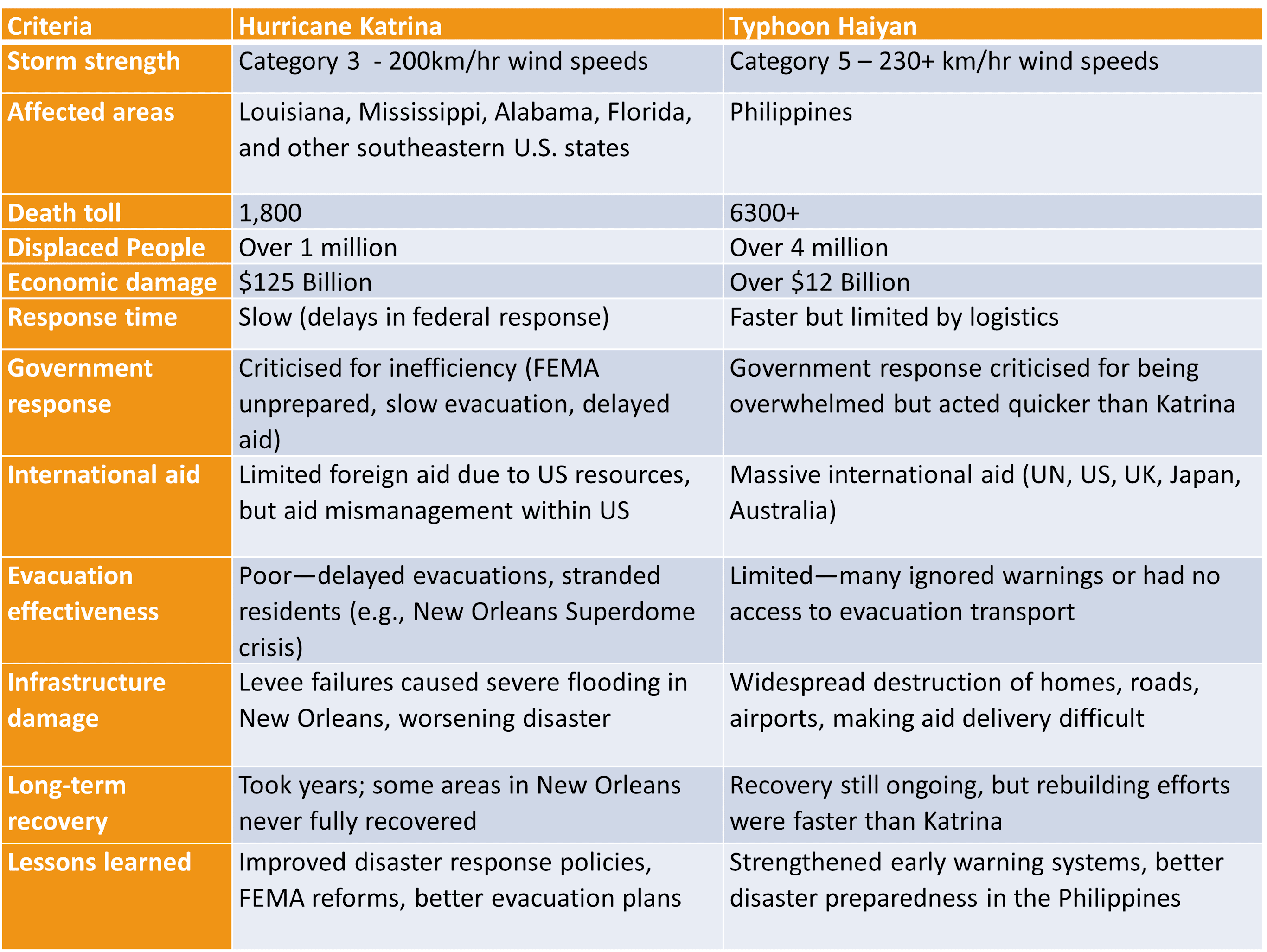Storm hazards
1/9
Earn XP
Description and Tags
Name | Mastery | Learn | Test | Matching | Spaced |
|---|
No study sessions yet.
10 Terms
Tropical storms will form when:
they form between 5-30 degrees north and south of the equator
the sea must be at least 26 degrees Celsius
the depth of the ocean must be at least 70m deep
prevailing winds caused by the Coriolis effect causes the winds to spin
there needs to be low air convergence
rapid outflow of the air in the upper atmosphere
tropical storms are formed over the ocean because …
the ocean gives them their power through latent heat
Formation of tropical storms
air is heated
warm air causes water to evaporate
strong winds from as rising air draws up more air and moisture
the rising air spins around a calm central eye causing the storm clouds
the rising air cools it forms larger storm clouds and rain fall
heat is given off as it cools powering the tropical storm
cooler air sinks into the eye making it calm
the tropical storm will travel across the ocean till it meets land
once it meets land the tropical storm will start to calm down as it is no longer being powered by the ocean

Climate change and tropical storms
distribution - more area will tropical storms as ocean temperatures will be rising across the globe
frequency - going to stay at the same frequency or potential decrease due to increase in intensity
intensity - the storms will become more intense as the storms will have more space to travel and there is more warm air making them more intense
Protecting against tropical storms
build houses out of materials that can withstand high wind speeds
buildings on stilts
circular buildings
education surrounding the risks
coastal defences
Monitoring tropical storms
bouys that measure the temperature of the water
bouys that can measure the waves
weather systems
satellite imaging
planning
planned evacuation routes and procedures
stock of emergency supplies
increased number of emergency services with an increased number of supplies and equipment
prediction
weather systems
satellite imaging
warning systems
Case studies
